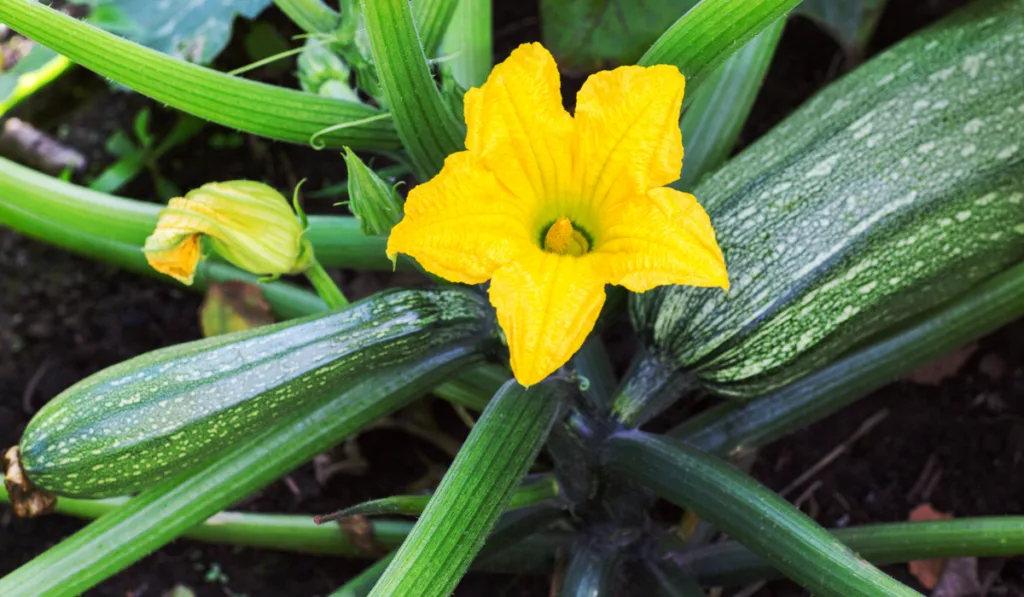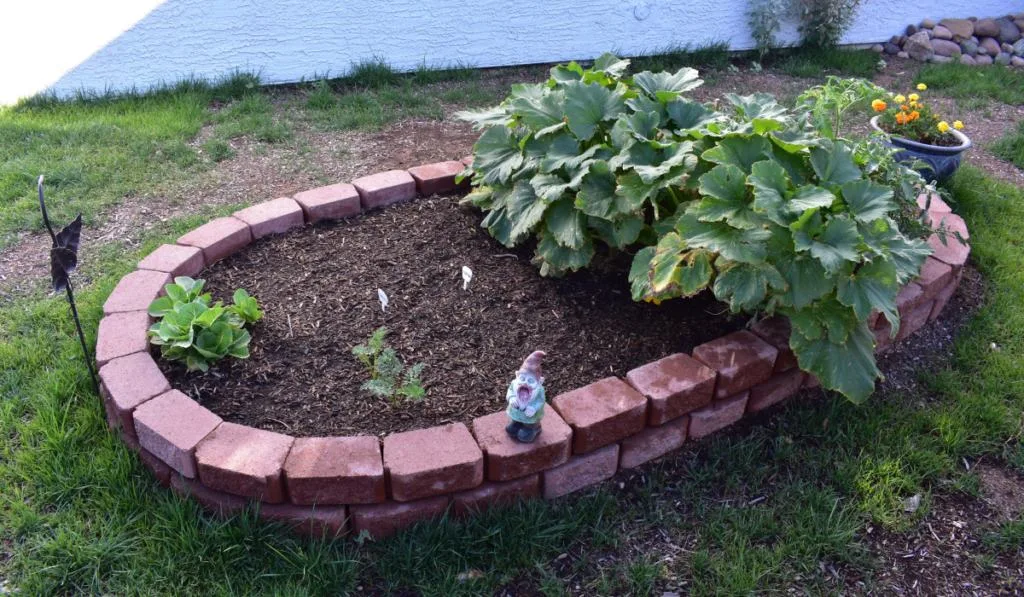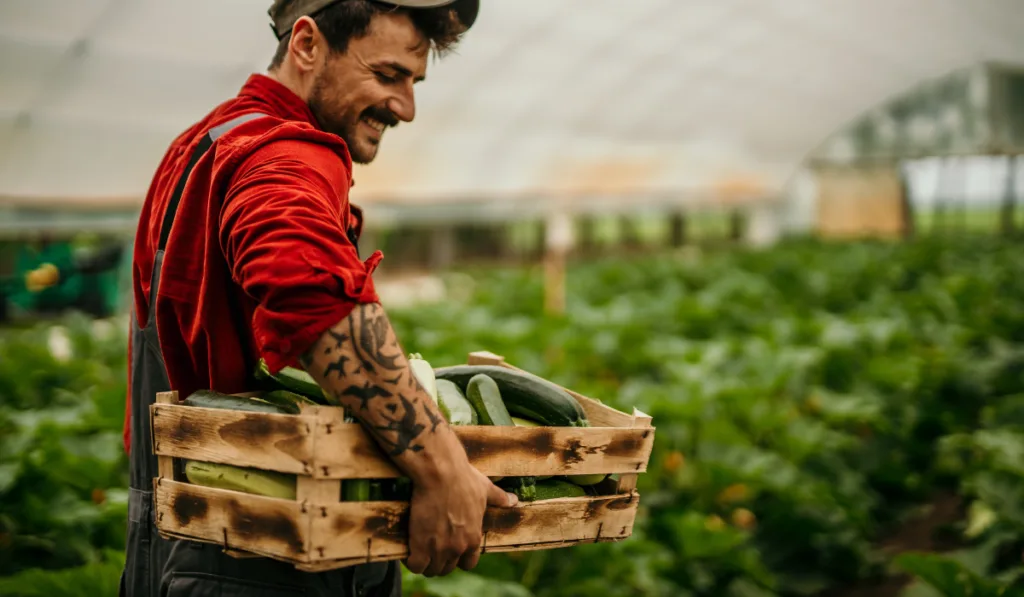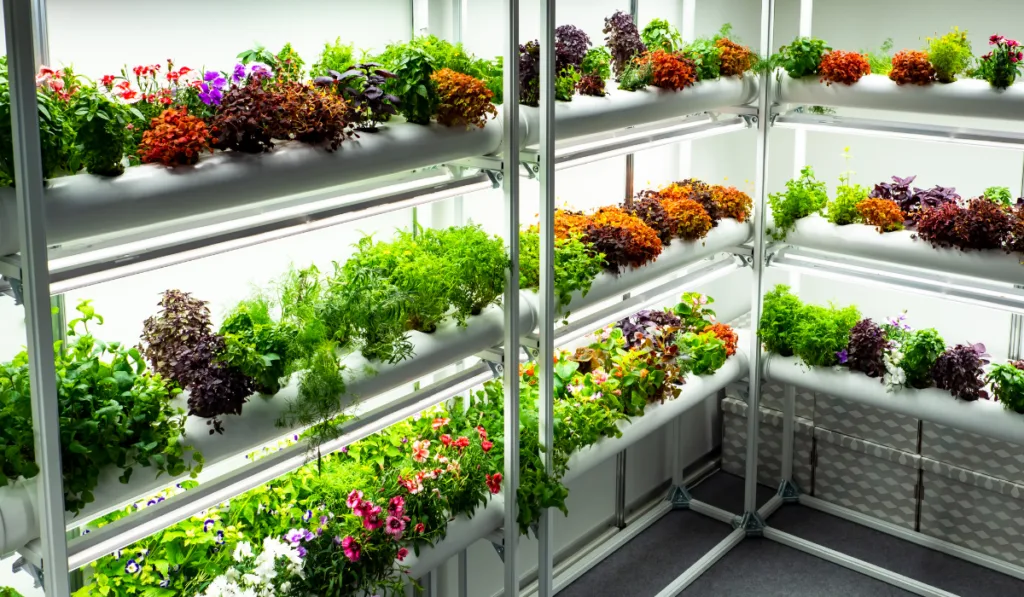Growing zucchini is fun, and once you get the hang of it, you may never want to stop.
Zucchinis can be grown in various ways: in the ground, in raised beds, in containers, in vertical gardens, and much more.
One upside to having various ways to grow zucchinis is that each one is suited to certain types of resources. In other words, you can opt for any of them based on the resources available to you.
In the rest of this article, we discuss 7 fun ways to grow zucchinis. We go over the processes and much more.

Table of Contents
In the Ground
You can grow zucchinis from their seeds or seedlings. While either option is okay, people opt for seedlings when planting late or when they want to harvest earlier. So, if you plant early and are not trying to get an early harvest, seeds will suffice.
Planting Zucchinis in the Ground
Zucchinis thrive in warm weather; they are summer plants. So, in temperate regions, they are not planted in the ground until summer.
Zucchinis are best grown in soil at temperatures between 65 and 70 degrees Fahrenheit. Therefore, if you live in a temperate region and intend to plant your zucchinis in the ground, wait till late May or early June.
Once the conditions are suitable for growing zucchinis in the ground, follow these steps to plant yours:
- Ensure you choose a planting location that gets full sun for at least 6 hours daily.
- Prepare the soil for sowing by adding some manure or compost to it.
- You may also drizzle some fertilizer over the soil. Two handfuls of general-purpose fertilizer sprinkled over each square yard of garden space should do.
- Sow 1-2 seeds in holes 0.5 inches deep. Ensure the holes are 3-4 inches away from each other, and the rows are 2-3 feet apart.
- After placing the seeds in the holes, cover them with 1 inch of fine soil. You could make a mound 12 inches wide and 7-8 inches tall over each seed for better drainage.
- Ensure you keep the soil moist but not soggy.
- Zucchini seeds typically germinate within 7-14 days. When the plants are around 4-6 inches tall with at least 2 sets of leaves, thin them.
- Thin zucchini plants until they are 2-3 feet apart. Zucchinis grow broad leaves, so thinning them as such promotes spacing.

Raised Bed
If you would like to plant your zucchinis outdoors earlier than late May or early June, raised beds can help. The soil in raised beds gets warm faster than in-ground soil. So, you can plant your zucchini seeds earlier.
Once the soil in your raised beds is warm enough, follow these steps to plant your zucchinis:
- Ensure your raised beds are in a location that gets at least 6 hours of full sun.
- Mix the soil with rich manure or compost to improve its fertility.
- Sow 2-3 seeds in holes 0.5 inches deep. If all 2-3 seedlings germinate from a divot, take the extra seedlings out, leaving just one.
- You can keep each hole 1-2 inches apart in the raised bed since space is limited. Each row can also be 1-2 feet away from each other.
- Ensure you install a trellis when your zucchinis start growing. With the trellis, you can train the zucchinis and keep them from infiltrating any plant nearby. Training your zucchinis also conserves space while ensuring that the plants do not block sunlight out.
- Using a trellis will also reduce the chances of disease transmission while improving air circulation.
- Zucchinis are heavy feeders. So, you may have to enrich the soil with compost and fertilizer routinely. If the foliage of your zucchini plants becomes pale or weak, it may need to add more compost and kelp fertilizer. Avoid fertilizers with high nitrogen content as they may reduce yield.
- Ensure you keep the soil moist, not soggy. Zucchinis thrive when given around 1 inch of water weekly.
- You should sow plants that attract pollinators around the zucchinis. Without pollinators, the zucchinis may not produce fruits.

In Pots/Containers
If you do not have enough space in your garden to plant zucchinis, you can use containers. To grow zucchinis in containers, do the following:
- Get containers that are at least 24 inches wide and at least 12 inches deep.
- Fill each container with at least 3 inches of well-drained potting soil containing compost.
- In holes 1 inch deep, sow 2-3 seeds at the center of each container. Space each one by about 1-2 inches. If all the seeds in a container germinate, thin them, leaving only the strongest seedling.
- Water the soil till it is moist, not soggy. Ensure you keep the soil moist even after the seeds germinate.
- Place the containers in a location that receives the most sunlight. At least 6 hours of sun is necessary, but more is better.
- Routinely add some water-soluble fertilizer to the soil in each container. Adding fertilizer every 4 weeks should suffice.
Indoors
If you intend to start your zucchinis indoors earlier – say as early as April – you can grow them in pots or containers.
To grow zucchinis in containers indoors, do the following:
- Get containers/cups that are at least 3 inches deep.
- Fill each container with at least 3 inches of well-drained potting soil containing compost.
- In holes 0.5 inches deep, sow 1-2 seeds at the center of each container. Ensure a spacing of around 0.5 inches between each one. If all the seeds in a container germinate, thin them, leaving only the strongest seedling.
- Water the soil till it is moist, not soggy. Ensure you keep the soil moist even after the seeds germinate.
- Place the container in the part of your home that receives the most daily sunlight.
- After about 7-14 days, the seeds should germinate.
- Acclimatize the seedlings to the conditions outdoor in the weeks before the soil outdoor becomes warm enough for planting. You can do this by placing them outdoors during the day and bringing them in at night for a week. Then the week after, you can put them in a sheltered area day and night.
- When soil temperature rises to around 65 degrees Fahrenheit or higher, you may transplant the seedling into the soil outside.

As a Vine/Vertical
Vining or climbing zucchini varieties can be grown vertically. This arrangement is particularly beneficial when you are very low on space.
To grow zucchinis vertically, do the following:
- Install a 6-foot garden stake, tomato cage, or trellis in the spot you intend to plant the zucchinis.
- If using a stake or a trellis, sow the seeds about 3 inches away on the south of the stake. If using a tomato cage, sow the seeds at the center.
- As the seeds germinate into seedlings, add some mulch. Dead leaves and wood mulch will do.
- As the seedlings start to grow, tie them up the stake or trellis. If you used a tomato cage, gently direct the stem and leaves of the seedlings upward through the tomato cage.
- With every 1-2 inches of growth by the seedlings, anchor them to the trellis or stake with extra strings. If you notice the vine drooping at any point, you may have to add more strings for support.
- When 4-6 fruits have set on the plant, prune the leaves below. Pruning the leaves will promote fruit development over leaf development.
- Harvest your zucchinis regularly. This way, the trellis, stake, or tomato cage will not be overwhelmed by the weight of the fruits.

Hanging Basket
Using hanging baskets reduces the exposure of zucchinis to pests. Hanging baskets are also easy to attend to; they save space and use less soil.
If you intend to grow your zucchinis in hanging baskets, do the following:
- Get a hanging basket that is at least 12 inches wide. Ensure it is well-draining.
- Fill about ¾ of the basket with potting mix. You may add some slow-release fertilizer to the soil to sustain nutrition over a long period.
- Add sufficient water to the basket to make the soil moist, not soggy. Then sow the seed or transplant the seedling.
- For each basket, try not to go beyond 1-2 seeds or seedlings.
- After planting the seeds, cover them up with soil. Then add some mulch.
- Ensure you keep watering the soil in the baskets routinely. An inch of water is sufficient for zucchinis under normal conditions. But with hanging baskets, zucchinis need 2 inches of water per week. This holds because evaporation is faster in hanging baskets.
- Hanging baskets are usually exposed to wind. So, the zucchinis may be pollinated naturally. But do not rely on that; ensure you pollinate your zucchini plants yourself.
- When everything is ready, hang the basket in a spot that gets at least 6 hours of direct sunlight daily.

Aerogarden
You may also grow zucchinis in an Aerogarden (advanced hydroponic systems). Hydroponics help you conserve water, save time, maximize space, and increase yield. With hydroponics, you need less soil and labor.
If you choose to go with an Aerogarden hydroponics system, the manufacturer provides a guide for using each model.
Since zucchinis grow very wide, you should opt for the Aerogarden Farm models. These models offer sufficient space for the spreading growth of zucchinis. If you use a smaller model, you may have to transplant the seedling later on.
Resources
- https://www.miraclegro.com/en-us/library/edible-gardening/how-plant-grow-zucchini
- https://www.homesandgardens.com/advice/how-to-grow-zucchini
- https://www.westcoastseeds.com/blogs/how-to-grow/grow-zucchini
- https://captainplanetfoundation.org/program-resource/extending-the-growing-season-raised-beds
- https://www.bedgardening.com/how-to-grow-zucchini-in-a-raised-garden-bed
- https://www.gardeningknowhow.com/edible/vegetables/zucchini/zucchini-container-care
- https://www.youtube.com/watch
- https://findgardening.com/growing-zucchini-in-hanging-baskets
- https://www.edengreen.com/blog-collection/benefits-of-hydroponics
- https://www.reddit.com/r/aerogarden/comments/faep9c/anyone_grow_zucchini_in_a_farm_xl
- https://aerogardenaddicts.com/thread/1156/grown-zucchini
- https://www.aerogarden.com/blog/grow-anything
